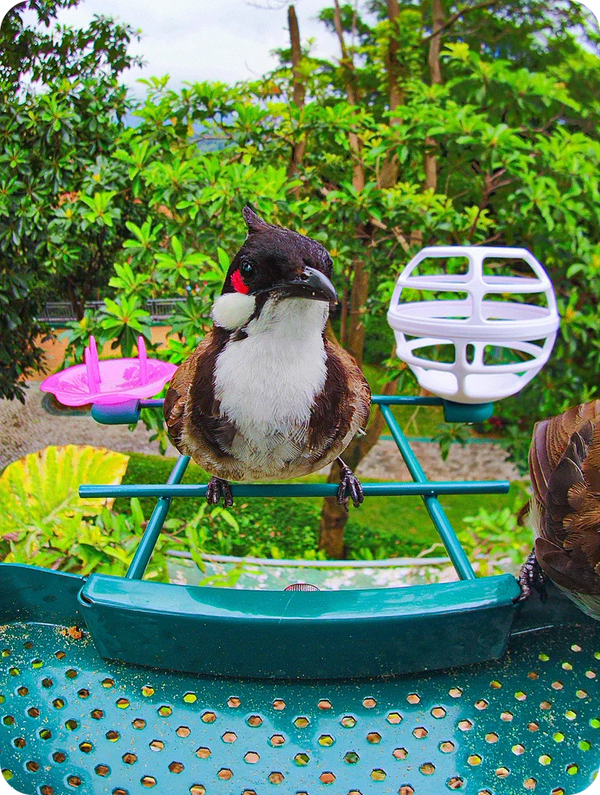Unlocking Nature: Discover the Magic of Bird Feeders with Cameras and Solar Power!
Birdwatching has long been a favorite pastime for nature enthusiasts, but with the advent of technology, this experience has transformed into something even more captivating. Enter the bird feeder with a camera and solar panel—a device that not only attracts our feathered friends but also allows us to observe them up close without disturbing their natural behaviors. As these innovative feeders gain popularity, they are becoming a staple in many gardens and backyards. Imagine sipping your morning coffee while watching vibrant cardinals and playful chickadees flit about, all captured in crisp detail by your feeder's built-in camera. This blend of nature and technology creates a unique experience that connects us with wildlife in a way that was previously unimaginable.

Understanding Bird Feeders with Cameras
At the heart of a bird feeder equipped with a camera is a fascinating blend of technology that brings the beauty of avian life right to your screen. These feeders are typically fitted with high-resolution cameras that can capture both photos and videos of the birds that visit. Most modern models use motion sensors to detect when a bird approaches, activating the camera to record the action. Some models even come with night vision capabilities, allowing you to observe nocturnal visitors without any hindrance. The footage is often transmitted wirelessly to your smartphone or computer, giving you the freedom to enjoy birdwatching from anywhere in your home. This technology not only enhances the experience but also provides valuable data for ornithologists and bird conservationists, helping them understand bird behavior and migration patterns.
How Cameras Enhance Birdwatching
Using cameras in bird feeders offers numerous benefits. For starters, it allows birdwatchers to observe wildlife without physically being present, which minimizes disturbances to the birds' natural behaviors. This is particularly important for shy or less common species that might shy away from feeders if they sense human presence. Additionally, the ability to capture high-quality images and videos means that bird enthusiasts can document their sightings and share them with others, fostering a sense of community among bird lovers. I remember a friend who set up a camera feeder in his backyard. He was thrilled to discover a family of blue jays nesting nearby, a sight he would have missed without the technology. The joy of watching those birds care for their young was an unforgettable experience for him.
The Role of Solar Panels
Solar panels play a crucial role in the functionality of modern bird feeders. These panels harness solar energy to power the camera and other electronic components, making them an eco-friendly option for nature enthusiasts. The efficiency of solar panels has improved significantly over the years, allowing them to generate sufficient energy even on cloudy days. This means that your bird feeder can operate continuously without the hassle of frequent battery replacements, making it a low-maintenance option for busy individuals. Moreover, solar energy reduces reliance on conventional energy sources, thereby lowering the carbon footprint associated with birdwatching.
Advantages of Solar Power in Bird Feeders
The sustainability of solar power in bird feeders cannot be overstated. By utilizing renewable energy, these feeders contribute to environmental conservation efforts while providing a reliable power source. The convenience of solar-powered devices means you can enjoy longer usage times without interruptions, which is particularly beneficial during the peak birdwatching seasons. My neighbor has a solar-powered bird feeder, and he often shares how much he appreciates not having to worry about charging batteries or replacing them. It allows him to focus on enjoying the birds instead of dealing with technical issues.
Advantages of Combining Cameras and Solar Power
The synergy of combining cameras with solar power in bird feeders creates an optimal experience for both users and wildlife. For starters, the convenience of not having to replace batteries means that bird watchers can set up their feeders and forget about them, allowing for uninterrupted observation. Furthermore, this combination promotes wildlife conservation by empowering users to monitor bird populations and behaviors. Engaging with nature in this way fosters a deeper appreciation for avian species and encourages individuals to take an active role in their protection. Additionally, the interactive aspect of receiving live footage can captivate users of all ages, making it a fantastic educational tool for children. I recall visiting a family with a solar-powered feeder; the kids were utterly fascinated by the variety of birds that appeared daily, sparking lively discussions about nature and conservation.
Bird Feeders: A Fusion of Technology and Nature
In summary, bird feeders equipped with cameras and solar panels represent a remarkable fusion of technology and nature, enhancing the birdwatching experience while promoting environmental sustainability. These feeders not only allow us to observe birds in their natural habitat but also empower us to contribute to their conservation. The ease of use, combined with the joy of witnessing feathered visitors up close, makes them an invaluable addition to any garden or backyard. Whether you are a seasoned birdwatcher or a curious beginner, investing in a bird feeder with a camera and solar panel could unlock a world of wonder right outside your window.







Comments